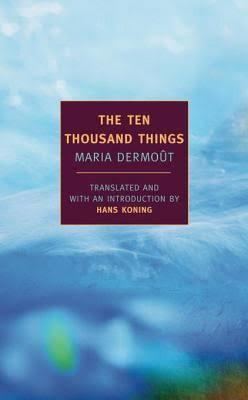7.6 /10 1 Votes7.6
| 3.8/5 Goodreads Copyright date 1958 | |||||||||||||||||||||||||||||||||
 | ||||||||||||||||||||||||||||||||||
Similar The Dream of a Common, Nottingham International Chess To, The Illusion of Progress in the Ara, Handbuch des Schachspiels, Many and Many a Year Ago | ||||||||||||||||||||||||||||||||||
The Ten Thousand Things (original Dutch: De Dienduizend Dingen, 1955) is a novel by the writer Maria Dermout. The story is a rich tapestry of family life against the exotic, tropical background of the Molucca Islands of Indonesia. Although never explicitly stated, the main setting is probably Ambon Island. The story is structured along geographical themes with four major divisions: the Island itself, the Inner Bay, the Outer Bay, and again the Island. Dermout's omniscient narrator is attempting to make sense of the whole generational saga by carefully reflecting on the wonder of this world while revealing some of the horrible evils that the characters commit. After the publication of the English translation by Hans Koning, Time magazine listed it as one of the best books of 1958.
Contents
The title of the book is indirectly derived from an epigraph by Chinese philosopher Ts’en Shen, as quoted by Aldous Huxley’s in The Perennial Philosophy "When the ten thousand things have been seen in their unity, we return to the beginning and remain where we have always been".
Meditation the ten thousand things
Critical reception
The book received many positive reviews. E.g. Time Magazine: "In translation the book is an uncommon reading experience, an offbeat narrative that has the timeless tone of legend.... The Ten Thousand Things are the fragments that make up life's substance, and to go on living, however maddeningly arranged the fragments may be, is itself a valid action. Spelled out against the rich, colorful background that author Dermout knows so well and handles so effectively, this is an affirmation that emerges with an oddly insistent, compelling effect." Reviewing the 2002 English edition, Publishers Weekly remarked "Dermot beautifully depicts the idyllic setting and handles the darker aspects of the story — ghosts, superstition, even murder — with equal skill."
Translations
The book has been translated into 11 different languages.
